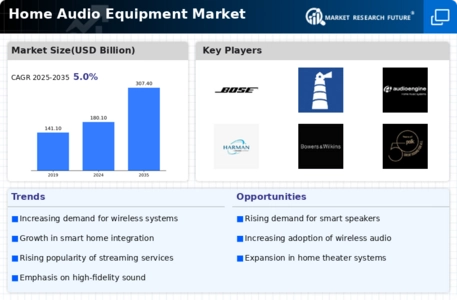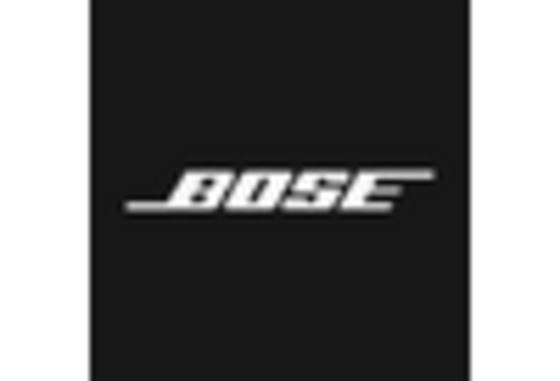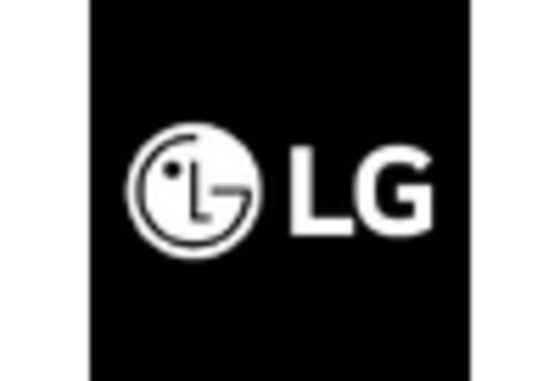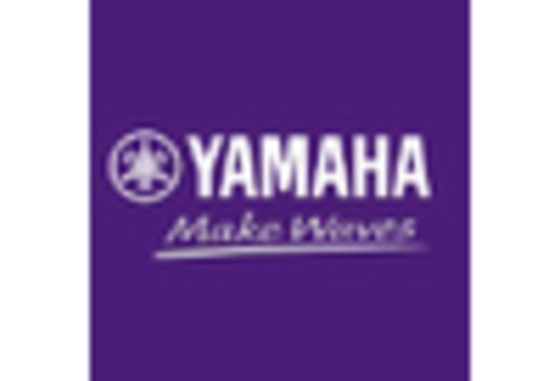Shift Towards Smart Home Integration
The shift towards smart home integration is a significant driver in the Home Audio Equipment Market. As consumers increasingly adopt smart home technologies, there is a growing demand for audio equipment that seamlessly integrates with other smart devices. This trend is evidenced by the rising popularity of smart speakers and multi-room audio systems, which allow users to control their audio experience through voice commands and mobile applications. Market analysis suggests that the sales of smart audio devices are expected to grow substantially, as consumers seek convenience and enhanced functionality. Additionally, the ability to connect audio equipment with home automation systems is becoming a key selling point for manufacturers. This integration not only enhances user experience but also positions the Home Audio Equipment Market favorably within the broader smart home ecosystem.
Technological Advancements in Audio Quality
The Home Audio Equipment Market is experiencing a notable transformation driven by rapid technological advancements. Innovations such as high-resolution audio formats and advanced digital signal processing are enhancing sound quality, making it more appealing to consumers. The introduction of wireless audio technologies, including Bluetooth and Wi-Fi streaming, has also contributed to the growth of this market. According to recent data, the demand for high-fidelity audio systems has surged, with a projected increase in sales of premium audio equipment. This trend indicates that consumers are increasingly willing to invest in superior audio experiences, thereby propelling the Home Audio Equipment Market forward. As manufacturers continue to innovate, the competition intensifies, leading to a wider array of products that cater to diverse consumer preferences.
Increased Consumer Awareness of Audio Quality
Consumer awareness regarding audio quality is a pivotal driver in the Home Audio Equipment Market. As individuals become more discerning about their audio experiences, there is a growing demand for equipment that delivers superior sound performance. This heightened awareness is reflected in the increasing popularity of audiophile-grade products, which are designed to meet the expectations of discerning listeners. Market data indicates that sales of high-end audio equipment have seen a significant uptick, suggesting that consumers are willing to invest in quality over quantity. Furthermore, educational initiatives by manufacturers and retailers are helping to inform consumers about the benefits of high-quality audio, thereby fostering a more informed market. This trend is likely to continue, as consumers increasingly prioritize audio fidelity in their purchasing decisions.
Rise of Streaming Services and Digital Content
The proliferation of streaming services and digital content is reshaping the Home Audio Equipment Market. As more consumers turn to platforms that offer high-quality audio streaming, the demand for compatible audio equipment is on the rise. Recent data indicates that the subscription-based model for music and audio content has gained immense popularity, leading to an increase in the sales of devices that support high-resolution audio formats. This trend suggests that consumers are seeking audio equipment that can deliver an immersive listening experience, aligning with the capabilities of modern streaming services. Consequently, manufacturers are focusing on developing products that enhance compatibility with these platforms, thereby driving growth in the Home Audio Equipment Market. The integration of smart features, such as voice control and multi-room audio, further enhances the appeal of these products.
Growing Popularity of Home Entertainment Systems
The Home Audio Equipment Market is significantly influenced by the growing popularity of home entertainment systems. As consumers seek to replicate the cinematic experience at home, the demand for high-quality audio equipment has surged. Recent statistics suggest that the home theater segment is expected to witness substantial growth, with a projected increase in sales of surround sound systems and soundbars. This trend is further fueled by the rise of streaming services, which offer high-definition audio content. Consequently, consumers are investing in audio equipment that enhances their viewing experience, thereby driving the Home Audio Equipment Market. The integration of smart technology into these systems also plays a crucial role, as it allows for seamless connectivity and control, appealing to tech-savvy consumers.


















Leave a Comment